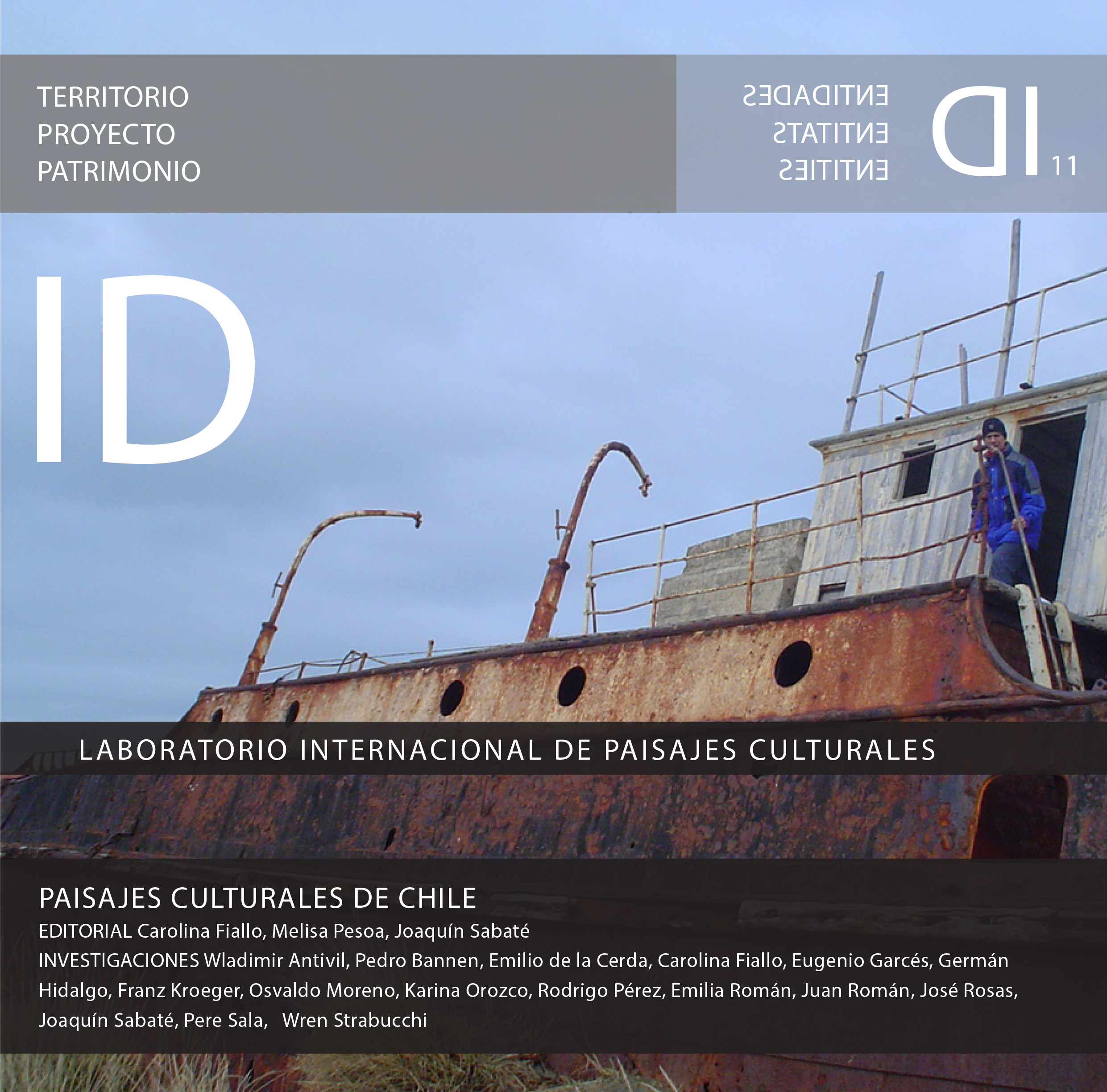TIERRA DE FUEGO. UN PAISAJE CULTURAL EXTREMO
DOI:
https://doi.org/10.5821/id.12017Resumen
Tierra del Fuego constituye seguramente uno de los paisajes culturales más singulares de Chile y dl mundo, en la medida en que se trata de un paisaje extremo. En este artículo se argumenta esta calificación, que requiere de un reconocimiento igualmente singular. Dentro del panorama que muestra este número de Identidades dedicado a Chile, se apuesta asimismo por explorar en este ámbito un proyecto de interpretación, un proyecto territorial de puesta en valor al servicio de sus paisanos, alejada del reclamo para alentar el mayor número de visitas turísticas; lo que exige analizar cuidadosamente el territorio a partir de su estructura formal, de su imagen física y de su construcción histórica; aprender a leer el paisaje heredado como un compendio de la historia de sucesivas culturas.
Palabras clave: Tierra del Fuego, paisaje cultural extremo, proyecto territorial.
Publicado
Número
Sección
Licencia
Derechos de autor 2023 Creative Commons

Esta obra está bajo una licencia internacional Creative Commons Atribución-NoComercial-CompartirIgual 4.0.
Aquellos autores/as que tengan publicaciones con esta revista, aceptan los términos siguientes:
- Los autores/as conservarán sus derechos de autor y garantizarán a la revista el derecho de primera publicación de su obra, el cuál estará simultáneamente sujeto a la Licencia de reconocimiento de Creative Commons CC BY-NC-SA- 4.0 que permite a terceros compartir la obra siempre que se indique su autor y su primera publicación esta revista, pero no se pueden cambiar ni se pueden utilizar comercialmente.
- Los autores/as podrán adoptar otros acuerdos de licencia no exclusiva de distribución de la versión de la obra publicada (p. ej.: depositarla en un archivo telemático institucional o publicarla en un volumen monográfico) siempre que se indique la publicación inicial en esta revista.
- Se permite y recomienda a los autores/as difundir su obra a través de Internet (p. ej.: en archivos telemáticos institucionales o en su página web) antes y durante el proceso de envío, lo cual puede producir intercambios interesantes y aumentar las citas de la obra publicada. (Véase El efecto del acceso abierto).













